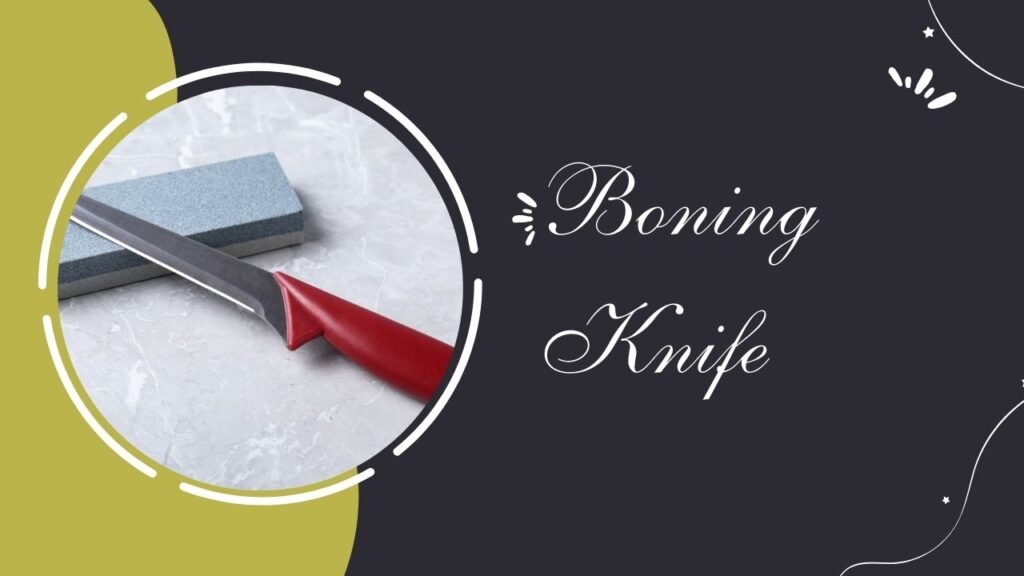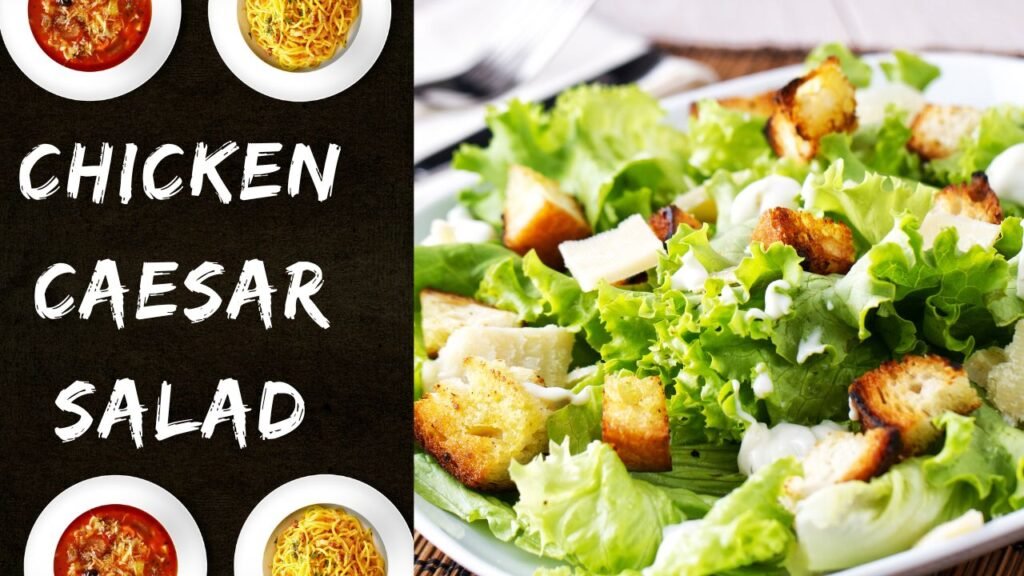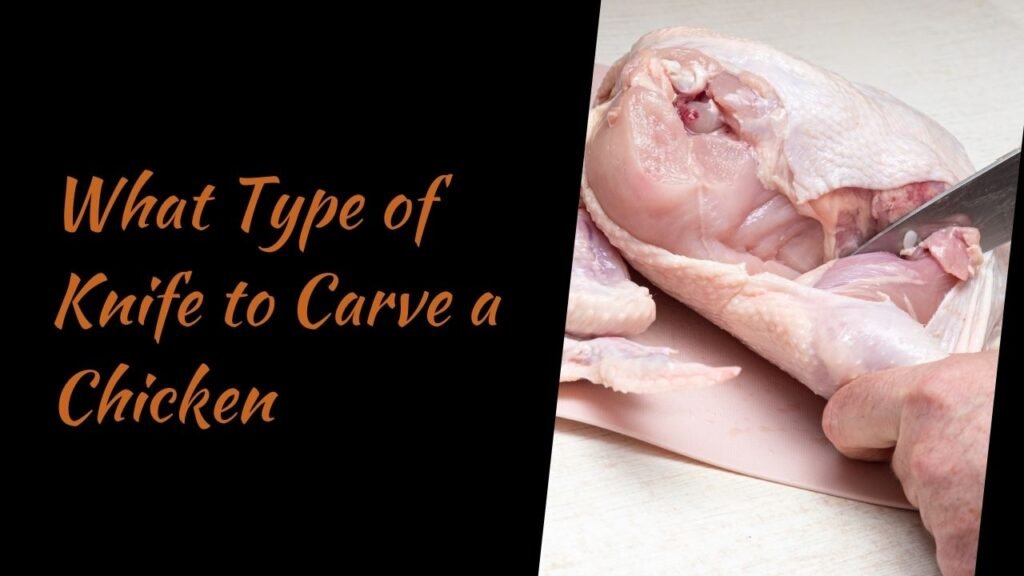Imagine you’ve just roasted a perfectly golden chicken, and the aroma is making your mouth water. Now comes the challenge: what type of knife to carve a chicken? Choosing the right knife can make the difference between smooth, precise slices and a frustrating, uneven mess. Whether you’re a seasoned chef or a kitchen novice, understanding which knife to use will elevate your carving game and ensure every bite is as delightful as the last. Let’s dive into the world of carving knives and discover the best tools for the job.
Why the Right Knife Matters
Ever wondered why some slices of chicken look restaurant-perfect while others are uneven and dry? The secret often lies in the knife you use. What type of knife to carve a chicken affects not only the ease of carving but also the presentation and texture of the meat.
Key Benefits of Using the Right Knife:
- Precision: Achieve uniform slices for an appealing presentation.
- Efficiency: Carve through bones and joints effortlessly.
- Safety: Reduce the risk of accidents with the right grip and balance.
- Flavor Preservation: Minimize juice loss, keeping the chicken moist and flavorful.
Types of Knives for Carving Chicken
When it comes to carving chicken, not all knives are created equal. Here are the top contenders to consider:
1. Carving Knife: The Classic Choice
A carving knife is specifically designed for slicing roasted meats, making it a top choice for carving chicken.
- Blade Characteristics:
- Long and Thin: Typically 8-12 inches, allowing for smooth, continuous slices.
- Sharp Edge: Precision slicing without tearing the meat.
- Pointed Tip: Facilitates maneuvering around bones and joints.
- Personal Opinion: I find that a well-balanced carving knife makes the entire process seamless. The length and sharpness allow for elegant slices that highlight the juiciness of the chicken.
2. Chef’s Knife: The Versatile All-Rounder
A chef’s knife is a staple in most kitchens, known for its versatility and efficiency.
- Blade Characteristics:
- Broad Blade: Usually 6-12 inches, suitable for various cutting tasks.
- Curved Edge: Facilitates a rocking motion for smooth slicing.
- Sturdy Construction: Can handle both slicing and chopping.
- Personal Opinion: While not as specialized as a carving knife, a chef’s knife is incredibly versatile. It’s perfect for those who prefer having one reliable knife for multiple kitchen tasks.
3. Slicing Knife: The Precision Specialist
A slicing knife is similar to a carving knife but with some distinct differences that make it ideal for certain tasks.
- Blade Characteristics:
- Narrow and Flexible: Typically 7-11 inches, allowing for delicate slicing.
- Fine Edge: Perfect for achieving thin, precise cuts.
- Lightweight: Easier to handle for intricate carving.
- Personal Opinion: If you love detailed presentation and precise slices, a slicing knife is a fantastic choice. Its flexibility helps navigate around bones effortlessly.
4. Utility Knife: The Handy Helper
A utility knife bridges the gap between a chef’s knife and a paring knife, offering a balance of size and functionality.
- Blade Characteristics:
- Medium Length: Usually 4-7 inches, making it manageable for various tasks.
- Sharp Edge: Suitable for slicing smaller portions and trimming.
- Lightweight: Easy to control for detailed carving.
- Personal Opinion: For those who prefer a smaller, more nimble knife, a utility knife is a great option. It’s especially handy for carving smaller chickens or handling intricate cuts.

5. Boning Knife: The Bone Whisperer
While not a carving knife per se, a boning knife plays a crucial role in the carving process, especially when dealing with bones.
- Blade Characteristics:
- Thin and Flexible: Typically 5-6 inches, ideal for maneuvering around bones.
- Sharp Point: Facilitates precise cuts along joints and bones.
- Stiff Spine: Provides the necessary rigidity for effective cutting.
- Personal Opinion: A boning knife is indispensable for separating meat from bones before or after carving. It complements your primary carving knife perfectly.
Essential Features to Look for in a Carving Knife
When deciding what type of knife to carve a chicken, certain features can enhance your carving experience:
- Blade Length: Longer blades (8-12 inches) are ideal for smooth, continuous slices.
- Blade Sharpness: A sharp blade ensures clean cuts without tearing the meat.
- Blade Flexibility: Flexible blades help navigate around bones and joints with ease.
- Handle Comfort: A comfortable, non-slip grip ensures better control and safety.
- Balance and Weight: Well-balanced knives reduce fatigue and improve precision during carving.
Step-by-Step Guide: How to Carve a Chicken with the Right Knife
Now that you know what type of knife to carve a chicken, let’s walk through the carving process to ensure you achieve perfect slices every time.
1. Let the Chicken Rest
After roasting, allow the chicken to rest for at least 10-15 minutes. This helps the juices redistribute, making the meat more tender and easier to carve.
2. Choose the Right Knife
Select the knife that best suits your needs based on the features discussed earlier. A carving knife or a chef’s knife is typically ideal for most tasks.
3. Secure the Chicken
Place the chicken on a stable cutting board. You can use a damp towel underneath the board to prevent slipping.
4. Start with the Legs and Thighs
- Separate the Legs: Cut through the skin between the leg and the body.
- Detach the Thigh: Follow the joint to separate the thigh from the body.
5. Remove the Breasts
- Make an Initial Cut: Start at the top of the breast bone and make a deep, steady cut downward.
- Slice Along the Rib Cage: Follow the contour of the rib cage to remove the breast meat in one continuous motion.
6. Slice the Wings
- Identify the Joint: Locate where the wing connects to the body.
- Cut Through the Joint: Use a slicing motion to detach the wing from the chicken.
7. Carve the Breast Meat
- Hold the Breast: With one hand, hold the breast firmly.
- Slice Evenly: Make smooth, even slices against the grain to ensure tenderness.
8. Serve and Enjoy
Arrange the carved chicken on a serving platter, ensuring each piece looks as delicious as it tastes.
Common Mistakes to Avoid
Even with the best knife, certain mistakes can hinder your carving process. Here are some common pitfalls and how to avoid them:
1. Using a Dull Knife
A dull knife can tear the meat and make carving more difficult.
- Solution: Regularly sharpen your knives to maintain their edge.
2. Rushing the Process
Hurrying can lead to uneven slices and increase the risk of accidents.
- Solution: Take your time and use steady, controlled motions.
3. Not Letting the Chicken Rest
Carving too soon can cause the juices to escape, resulting in dry meat.
- Solution: Allow the chicken to rest for at least 10-15 minutes before carving.
4. Improper Knife Grip
An insecure grip can lead to slips and injuries.
- Solution: Hold the knife firmly with a comfortable grip, ensuring control throughout the carving process.
5. Cutting Against the Grain
Carving against the grain ensures more tender slices, while cutting with the grain can make the meat tougher.
- Solution: Identify the direction of the grain and slice perpendicular to it for optimal tenderness.
Comparing Knife Types for Carving Chicken
Choosing the right knife involves understanding the strengths and weaknesses of each type. Here’s a quick comparison to help you decide:
| Knife Type | Pros | Cons |
|---|---|---|
| Carving Knife | Long, sharp, precise cuts; ideal for large birds | Less versatile for other tasks |
| Chef’s Knife | Versatile, well-balanced, durable | Can be bulky for intricate carving |
| Slicing Knife | Thin, flexible, precise | May require more maintenance |
| Utility Knife | Manageable size, precise cuts | Not as specialized as carving knives |
| Boning Knife | Excellent for separating meat from bones | Limited use outside meat preparation |
Delicious Recipes Using Carved Chicken
Once you’ve mastered what type of knife to carve a chicken, it’s time to put those perfectly sliced pieces to good use. Here are some mouth-watering recipes to inspire your next meal.
1. Classic Roast Chicken with Herbs
A timeless favorite that never fails to impress.
Ingredients:
- 1 whole roasted chicken, carved
- 2 tbsp olive oil
- 1 lemon, sliced
- 4 cloves garlic, smashed
- Fresh herbs (rosemary, thyme, parsley)
- Salt and pepper to taste
Instructions:
- Prepare the Chicken: Carve the roasted chicken into desired pieces.
- Season: Drizzle olive oil over the chicken slices and sprinkle with salt, pepper, and fresh herbs.
- Add Aromatics: Arrange lemon slices and garlic around the chicken on a serving platter.
- Serve: Garnish with additional herbs and serve with your favorite sides like roasted vegetables or mashed potatoes.

2. Chicken Caesar Salad
A healthy and hearty option that’s perfect for lunch or dinner.
Ingredients:
- Carved chicken breast
- Romaine lettuce, chopped
- Caesar dressing
- Croutons
- Parmesan cheese, shaved
- Optional: Cherry tomatoes, avocado slices
Instructions:
- Assemble the Salad: In a large bowl, combine romaine lettuce, croutons, and cherry tomatoes if using.
- Add Chicken: Top with slices of carved chicken breast.
- Dress: Drizzle Caesar dressing over the salad and toss gently to combine.
- Garnish: Sprinkle shaved Parmesan cheese and add avocado slices for extra creaminess.
- Serve: Enjoy immediately for the freshest taste.
Quick Recipe Ideas
| Recipe | Main Ingredients | Preparation Time | Difficulty |
|---|---|---|---|
| Classic Roast Chicken | Carved chicken, herbs, lemon, garlic | 10 minutes | Easy |
| Chicken Caesar Salad | Carved chicken, romaine, Caesar dressing | 15 minutes | Easy |
| Chicken Tacos | Carved chicken, tortillas, toppings | 10 minutes | Easy |
| Chicken Alfredo Pasta | Carved chicken, fettuccine, Alfredo sauce | 20 minutes | Medium |
Frequently Asked Questions
1. Is it necessary to use a carving knife for carving chicken?
While a carving knife is ideal for precise and smooth slices, you can use other types of knives like a chef’s knife or a slicing knife. The key is to use a sharp, well-balanced knife that allows for controlled and even cuts.
2. How do I keep the chicken moist while carving?
Allow the chicken to rest for at least 10-15 minutes after roasting. This helps the juices redistribute, keeping the meat moist. Additionally, use a sharp knife to make clean cuts without tearing the meat.
3. Can I carve a whole chicken myself, or should I ask someone else to do it?
With the right knife and techniques, you can certainly carve a whole chicken yourself. It may take a bit of practice, but it’s a valuable skill that enhances your cooking experience.
4. What should I do if I encounter bones while carving?
Use a boning knife or the tip of your carving knife to carefully navigate around bones. Patience and precision are key to avoiding accidents and ensuring clean cuts.
5. How should I store leftover carved chicken?
Store leftover carved chicken in an airtight container in the refrigerator for up to 3-4 days. For longer storage, freeze the slices in a freezer-safe bag or container for up to 3 months.
Conclusion
Mastering what type of knife to carve a chicken is a game-changer in the kitchen. With the right knife—whether it’s a carving knife, chef’s knife, slicing knife, utility knife, or boning knife—you can achieve professional-looking slices that enhance both the presentation and taste of your meals. Remember to prioritize safety, use proper techniques, and choose a knife that feels comfortable in your hand. Whether you’re preparing a holiday feast or a simple weeknight dinner, these tips will ensure your chicken carving is effortless and enjoyable. So, next time you roast a chicken, you’ll know exactly what type of knife to carve a chicken like a pro!


